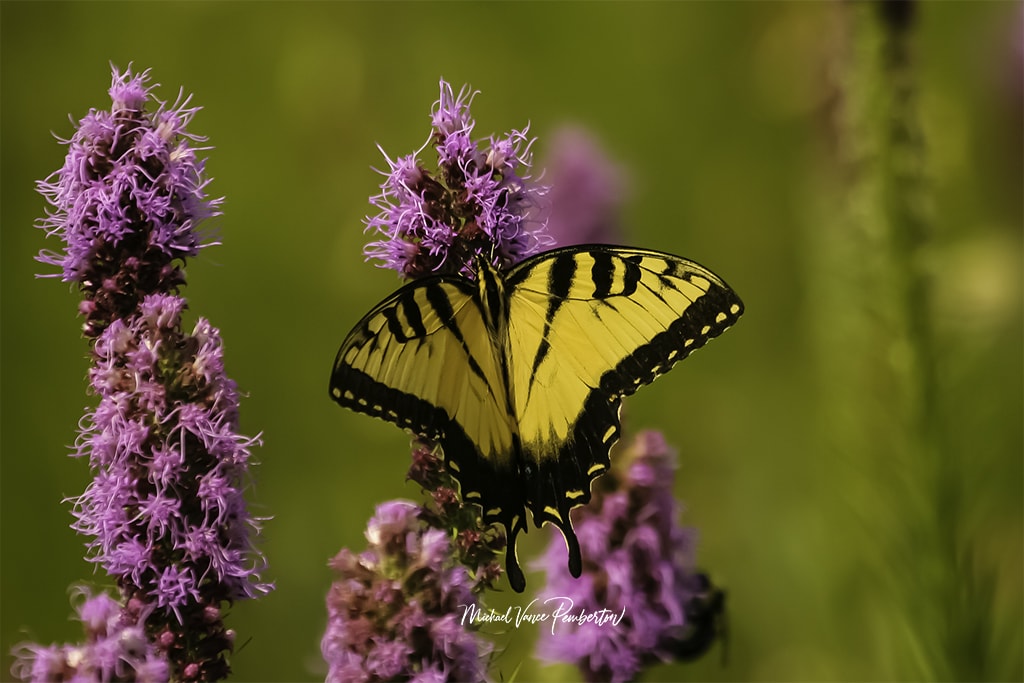
The world of butterflies is a realm of exquisite beauty, vibrant colors, and delicate wings that flutter like whispers in the breeze. Photographing these ephemeral creatures can be captivating, offering an opportunity to freeze their fleeting moments of grace in stunning images. Whether you’re an amateur photographer or a seasoned pro, capturing the intricate details of butterflies requires patience, technique, and a deep appreciation for the natural world.
1. Choose the Right Time and Place.
Timing: Unveiling the Beauty of Butterflies Through Light and Environment.
In the intricate dance of nature’s timing, photographing butterflies becomes an art of synchronization. These delicate creatures, adorned with mesmerizing hues and intricate patterns, come alive in a symphony of colors when the sun embraces them. Understanding the nuances of timing is essential for capturing their vibrant beauty and respecting their rhythms and habitats.
Sunlit Moments of Majesty.
Picture a warm, sun-drenched day where the air is alive with the delicate flutter of wings. This is the stage upon which butterflies genuinely shine. It is during these sunlit moments that they reveal their true brilliance. When the sun’s rays illuminate their wings, they become a canvas of colors that seem to have been brushed by an artist’s hand.
Butterflies are creatures of the light, and their activity peaks when the sun is high in the sky. As mid-morning transitions into the afternoon, they take flight with renewed energy, displaying their full splendor. The sun’s warmth energizes them and facilitates the opening of their wings, allowing us to witness their exquisite patterns in all their glory.
The Magic of Golden Hours.
While midday showcases butterflies at their most vibrant, there’s another magical time for butterfly photography – the golden hours of dawn and dusk. Early morning and late afternoon, bathe the world in a soft, diffused light that paints everything in a warm, gentle glow. This light is perfect for capturing the subtle details of butterfly wings without harsh shadows or overexposure.
During these hours, the sun’s angle is lower, creating longer shadows and adding depth to your photographs. The soft, directional light can accentuate the texture of their wings, revealing intricate patterns and delicate structures that might go unnoticed under harsh midday sunlight.
Nectar-Fueled Encounters.
As you venture into butterfly photography, it’s not just about chasing light; it’s also about seeking the right environment. Butterflies are nature’s connoisseurs of beauty, drawn to vibrant flowers that offer a symphony of nectar-filled delights. Their enchanting flight paths often lead to meadows, gardens, and parks adorned with a plethora of blossoms.
When seeking out these delicate creatures, look for areas where flowers flourish abundantly. With their thoughtfully cultivated mix of nectar-rich blooms, Butterfly gardens are havens for these enchanting insects. Meadows and parks that harbor a variety of flowering plants are also promising locations for your photographic pursuits.
Preserving Their World, Capturing Their Essence.
As you embark on your quest to photograph butterflies, remember that timing and environment are not just factors in your creative process but also essential conservation components. You become a guardian of the delicate balance that sustains these winged wonders by respecting their natural habitats and rhythms.
In the early morning’s hush and the late afternoon’s glow, as the sun dances with butterflies, you have the privilege of witnessing moments of ephemeral magic. Through your lens, you capture not just their physical beauty but the essence of their existence – a fleeting reminder of the delicate harmony in the heart of nature’s intricate tapestry.
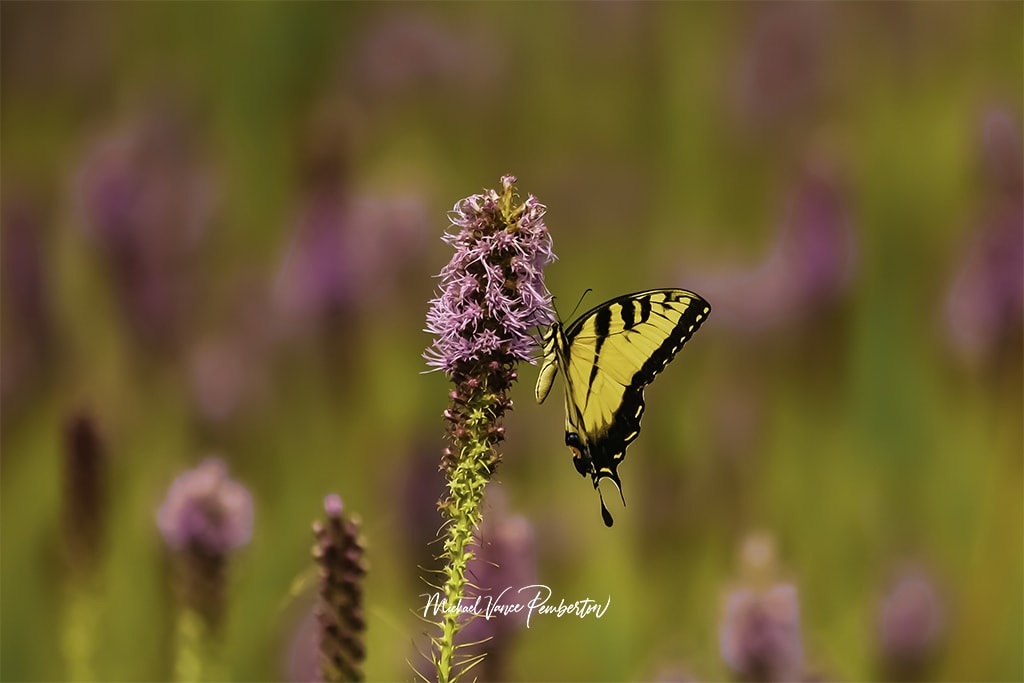
2. Equipment and Settings.
Capturing Butterfly Elegance: Equipment and Techniques
In photography, it’s often believed that high-end equipment is the key to exceptional images. However, when photographing the delicate beauty of butterflies, it’s not just about the gear you possess – it’s the artistry and technique that genuinely bring their enchantment to life.
The Beauty of Simplicity.
While top-of-the-line cameras and lenses can indeed offer superior image quality, they are not the sole gatekeepers to captivating butterfly photography. The essence of these winged wonders lies in their intricate details, vibrant colors, and the fleeting moments they share with us. Whether you’re a beginner or a seasoned photographer, pursuing these moments truly matters.
A DSLR or mirrorless camera equipped with a macro lens is highly recommended for capturing the intricate world of butterflies. These lenses allow you to get up close and personal, revealing details that might go unnoticed. However, be reassured if you’re armed with nothing more than a smartphone. Today’s smartphone cameras are equipped with impressive capabilities, and investing in clip-on macro lenses can bring you closer to your subject, unveiling a hidden universe of patterns and textures.
Crafting Visual Magic: Aperture and Depth of Field.
The magic of butterfly photography lies in the balance between focus and artful blur. To achieve this, understanding aperture and depth of field is essential. A wide aperture, represented by a low f-stop number (e.g., f/2.8 or f/4), allows you to create a shallow depth of field. This means that the area in focus will be sharp, while the background and foreground will be rendered as a soft, dreamy blur.
Selecting a wide aperture achieves two crucial outcomes: firstly, it isolates the butterfly from its surroundings, making it the undeniable star of the composition. Secondly, it creates a sense of depth and dimension, giving your photograph a three-dimensional quality.
Striking the Balance: Focus and Stability.
As you aim to encapsulate the delicate charm of butterflies, achieving perfect focus is paramount. When shooting with a wide aperture, it’s crucial to ensure that the butterfly’s entire body – from its delicate antennae to the intricacies of its wings – is sharp and in focus. This might require adjustments to your camera’s focus settings or manual focus techniques. Take your time and experiment to find the right balance.
A tripod can be a reliable ally in this endeavor. It stabilizes your camera, ensuring sharpness even in low light conditions or during extended exposures. With the camera securely mounted on a tripod, you can fine-tune your composition and focus without the risk of a camera shake.
An Artistic Journey Awaits.
In butterfly photography, equipment serves as a conduit for your artistic vision. While sophisticated cameras and lenses offer advantages, your technique, creativity, and passion ultimately craft images that resonate with viewers. As you delve into this world, remember that each photograph is an opportunity to tell a story, encapsulate a moment of awe and wonder, and share these creatures’ fragile beauty with the world. Whether with a smartphone or a professional camera, the journey of capturing butterfly elegance is one of artistic exploration and boundless fascination.
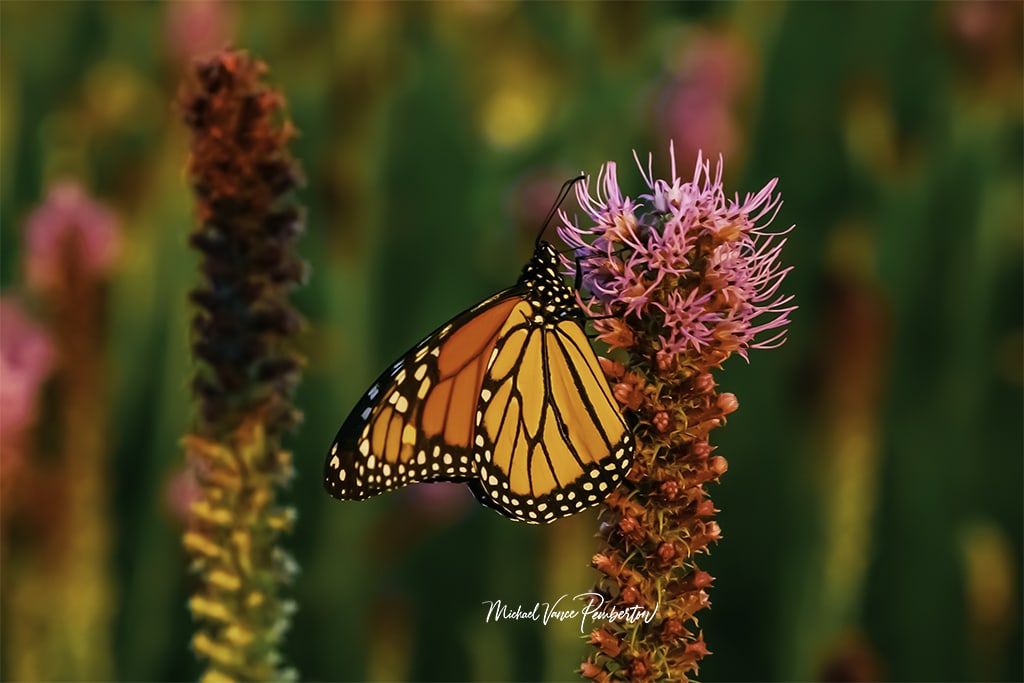
3. Approach with Caution.
Graceful Encounters: Approaching Butterflies with Delicacy and Patience.
In butterfly photography, every moment is a dance of delicate movements and fleeting opportunities. As you step into their world, it becomes evident that the key to capturing their ephemeral beauty lies in the lens you wield, the gentleness of your approach, and the artistry of your timing.
The Ballet of Stillness.
Butterflies are creatures of fragility and finesse. Their wings, adorned with intricate patterns that rival the grandest tapestries, flutter in harmony with the wind. In the presence of even the slightest disturbance, they quickly take flight, disappearing into the horizon like whispers carried away by the breeze.
When approaching these enchanting insects, the first rule is to embrace stillness. Every movement must be measured, every step taken with a lightness that echoes the delicate grace of your subjects. Slowly and deliberately, move closer, allowing the butterfly to adjust to your presence without alarm.
A Symphony of Calmness.
In the world of butterflies, calmness is a symphony that resonates with their senses. The rustling of leaves, the sharp click of a camera shutter, or even the sudden shadow cast by an approaching figure – these are notes that disrupt their serenity. To capture their essence, approach them with a tranquility that matches the rhythm of their surroundings.
Avoid sudden movements that might startle them. Instead, move as if you’re part of the natural world around them, seamlessly blending into the tapestry of life. They are more likely to linger when they sense no threat, allowing you to immortalize their beauty through your lens.
The Art of Patience: Flowers as Allies.
Nature offers its own guide to successful butterfly encounters. Often, you’ll find these ethereal creatures drawn to the vibrant embrace of flowers. Here, amidst petals painted in hues that mirror their wings, they find sustenance and moments of stillness. If you encounter a butterfly perched upon a flower, it’s an invitation to a longer encounter.
When a butterfly is absorbed in sipping nectar, it’s engrossed in its world of sweetness. This moment of engagement can give you an extended opportunity to observe and photograph. Approach the scene gradually, allowing them to become accustomed to your presence. They may linger longer in their state of rapture, enabling you to capture their beauty from various angles.
Honoring Their Space and Time.
As you navigate the delicate dance of photographing butterflies, remember that you are stepping into their realm, their sacred space. The respect you show for their environment and their rhythms not only reflects your commitment to ethical photography but also contributes to the preservation of their fragile existence.
Approach them as a fellow admirer of nature’s wonders, a silent observer rather than an intruder. Embrace stillness, embody patience, and let your movements mirror the grace that defines these exquisite insects. In the harmony of your presence, you’ll find the moments that reveal their enchanting beauty in all its intricate glory.
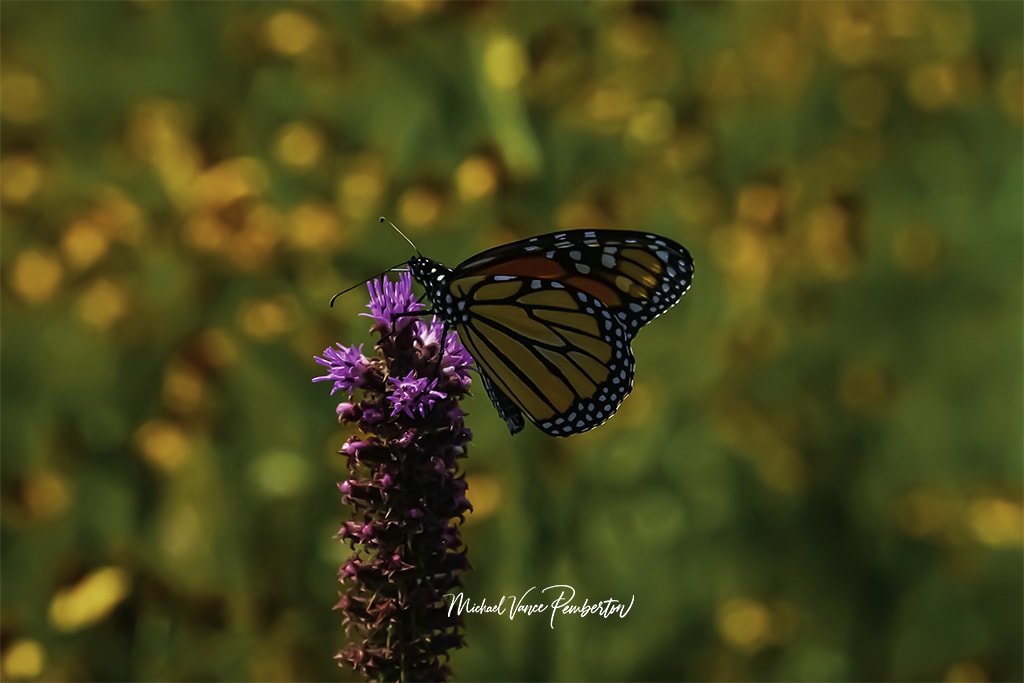
4. Patience and Observation.
The Dance of Patience: Capturing Butterfly Elegance Through Observation.
In butterfly photography, patience is not just a virtue; it’s the golden thread that weaves together moments of enchantment and discovery. As you step into their realm, armed with your camera and an eager heart, you embark on a journey where time slows down, and anticipation becomes your greatest ally.
A Glimpse into Butterfly Behavior.
Butterflies, those ephemeral emissaries of beauty, are not merely subjects to be photographed; they are intricate beings with habits and behaviors that tell stories of their lives. To capture their essence, you must embrace the role of a silent observer, a watcher of grand and subtle moments.
Observe how they flutter through the air, each movement a delicate choreography that defies gravity. Watch as they alight upon flowers, their wings opening and closing in a rhythm that mirrors the ebb and flow of life. Take note of how they sip nectar, their proboscis delicately uncoiling like a slender thread connecting them to the flower’s heart.
Whispers of Interaction.
In the world of butterflies, interactions are whispered exchanges that speak volumes. As you stand among them, give yourself the gift of time – time to witness their interactions with one another. Watch as they engage in aerial dances, a complex ballet of courtship and communication. Notice how they share perches, sometimes tolerating the close presence of one another and at other times engaging in gentle territorial disputes.
These interactions offer a window into their lives, providing insight into their social dynamics and individual personalities. Each flutter, each flutter of wings, each delicate touch becomes a brushstroke in the portrait you’re composing through your lens.
The Art of Anticipation.
In butterfly photography, patience isn’t just about waiting; it’s about anticipation, about tuning into the rhythm of their existence. As you immerse yourself in their world, you’ll find that your patience is rewarded with the ability to anticipate their movements. This anticipation becomes a silent communication, a dance of understanding between you and your subjects.
When you see a butterfly poised on the edge of a leaf, wings poised for flight, you’ll sense the impending launch. When one flutters its wings with a unique fervor, you might recognize it as a precursor to flight. This understanding, this silent dialogue, allows you to position yourself and your camera for the perfect shot that captures their physical form and the essence of their being.
A Symphony of Connection.
In the dance of patience, you discover a symphony of connection that binds you to the delicate world of butterflies. Your camera becomes a bridge, your lens a translator of moments. As you observe and immerse yourself in their realm, you become a part of their world, attuned to their movements and their stories.
With each click of your shutter, you capture images and fragments of time, snippets of beauty, and whispers of stories that might otherwise go unheard. So let patience guide your steps, let observation be your compass, and let anticipation be your muse. In this intricate dance, you become a photographer and a storyteller of the ephemeral elegance that is the butterfly’s gift to the world.
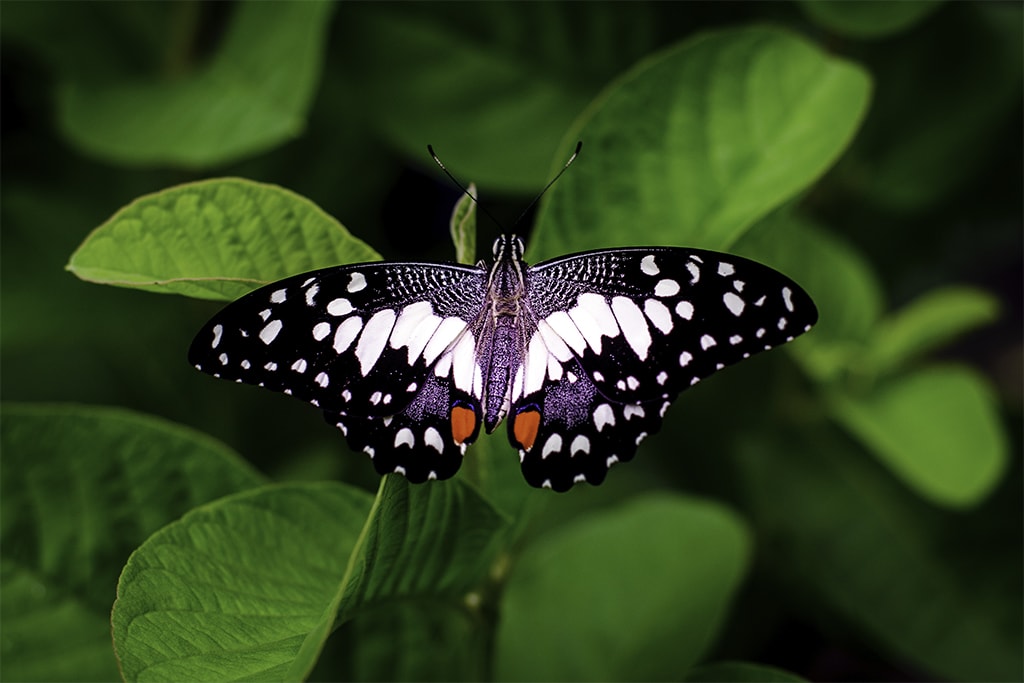
5. Composition and Framing.
Crafting Visual Poetry: Composing Butterfly Photography with Artistry.
Photographing butterflies isn’t just about capturing their physical form; it’s about weaving a visual tapestry that embodies their grace, vibrancy, and delicacy. As you wield your camera, consider yourself a storyteller who uses composition as a language to convey the magic of these winged wonders to the world.
The Rule of Thirds: Balancing Beauty.
In photography, the rule of thirds is a guiding principle that brings harmony to compositions. Imagine overlaying a tic-tac-toe grid onto your frame, dividing it into nine equal sections. The points where these lines intersect create points of visual interest. Placing your subject – in this case, the butterfly – along these intersections or along the lines themselves draws the viewer’s gaze and adds depth to the image.
When applying the rule of thirds to butterfly photography, position the butterfly slightly off-center. This adheres to the principles of composition and creates a dynamic visual tension that engages the viewer. The negative space that emerges around the subject allows the eye to breathe, enhancing the overall visual experience.
Unleashing the Beauty of Negative Space.
Negative space, often called the “breathing room” in a photograph, is a powerful tool that accentuates the subject’s significance. By leaving areas of your frame intentionally empty, you give the butterfly room to exist without visual clutter. The result is a sense of elegance and serenity that invites viewers to explore the details of the subject more closely.
When composing your shots, allow the butterfly to inhabit a portion of the frame while the surrounding space – perhaps a sky of cerulean blue or a sea of vibrant green leaves – acts as a supporting canvas. This interplay between subject and space adds depth and meaning to your photographs.
Exploring Perspectives: A Kaleidoscope of Views.
Imagine a butterfly as a multifaceted gem, each angle revealing a different facet of its splendor. Embrace this concept by experimenting with various shooting angles. Capture their enchanting beauty from above, a view that showcases their wings in their full glory. Get to their eye level to reveal intricate patterns and textures unseen from above. Or, shoot from below, allowing the sky to serve as an ethereal backdrop to their delicate dance.
Each angle tells a different story, allowing you to create a narrative that celebrates their multifaceted nature. As you explore these perspectives, you’ll uncover hidden details, secret hues, and a kaleidoscope of possibilities that enrich your visual storytelling.
Crafting Your Masterpiece.
In butterfly photography, your camera becomes a brush, your lens a conduit of emotion, and your compositions an artistic expression of wonder. The principles of photography guide your craft, but your intuition, your understanding of the butterfly’s essence, elevates your work to the realm of visual poetry.
Compose with the rule of thirds as your guide, allow negative space to breathe life into your images, and explore perspectives like a curious explorer. With each click of your shutter, you compose a symphony of color, light, and form – a testament to the intricate beauty within the delicate world of butterflies.
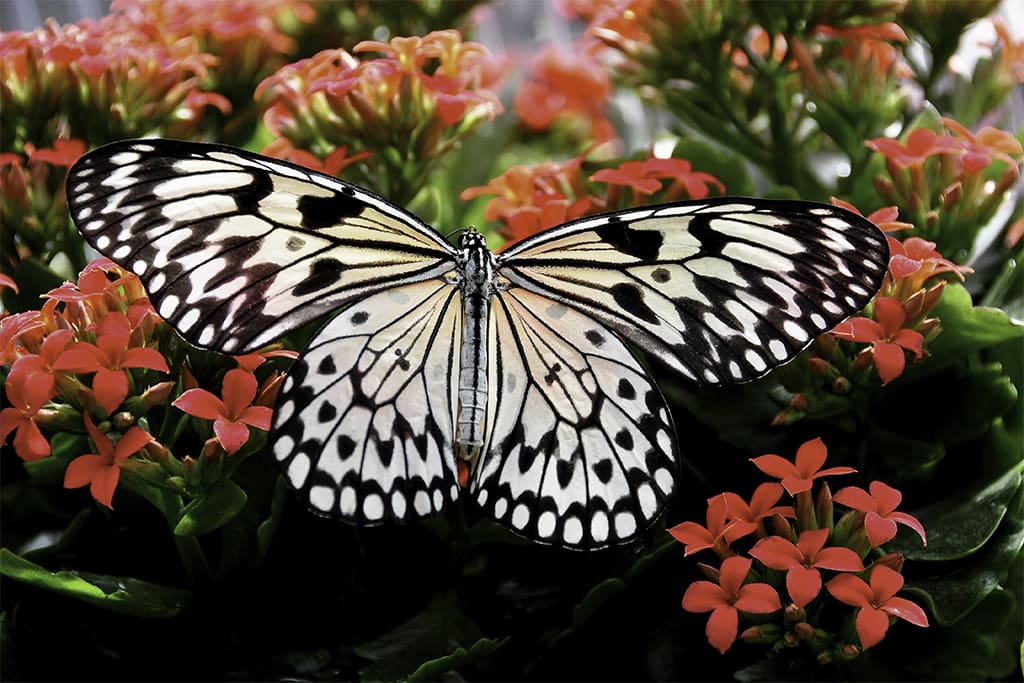
6. Embrace Nature’s Palette.
Vivid Elegance Unveiled: Immersing in the Kaleidoscope of Butterfly Colors.
In photography, few subjects offer a palette as enchanting as butterflies. These delicate creatures embody nature’s artistry with their wings adorned in intricate patterns and hues that span the spectrum. To capture their essence through your lens is to journey into a world where color and pattern become an exquisite symphony of visual delight.
A Dance of Colors and Patterns.
A butterfly’s wings are like canvases painted with the brushstrokes of dreams. Each species boasts a unique composition of colors and patterns that serve as both a visual spectacle and a testament to their role in the tapestry of nature. Some wings are adorned in gentle pastels that evoke a sense of serenity, while others flaunt bold, vivid hues that demand attention.
In the pursuit of butterfly photography, your task is to become a witness to this kaleidoscope of colors. Study their wings as you would the brushstrokes of a master painter, capturing the nuances of each hue and the intricacies of every line. Allow your lens to become a conduit through which their beauty is translated into visual poetry.
The Magic of Microcosms: Unveiling the Unseen.
A butterfly’s wings are more than just a canvas of color; they are a universe of detail that often escapes the naked eye. Look closely, and you’ll discover an entire microcosm of wonder. Tiny scales resembling iridescent jewels cover their wings, creating an effect akin to stained glass when light dances upon them. These scales are responsible for the brilliant hues that catch the sunlight and create an ethereal glow.
As a photographer, your task is to get up close and personal, to explore this hidden world within their wings’ intricacies.
Capture the shimmering scales, the delicate veins that serve as nature’s scaffolding, and the minute details that add depth and texture to their wings.
The Intimacy of Proximity.
In butterfly photography, intimacy is not just an emotional concept; it’s a technique that yields breathtaking results. Feel free to get so close that you can see the individual scales forming their vibrant tapestry. Fill your frame with their wing, allowing the patterns and colors to envelop the viewer in a visual embrace.
By getting close, you’re not merely capturing an image but inviting the viewer to immerse themselves in the intricate beauty that often remains hidden to the casual observer. This intimacy fosters a connection, allowing your photograph to resonate more deeply.
Crafting Visual Haikus of Nature.
Butterfly photography is more than capturing images; it’s the art of translating the fleeting elegance of these creatures into visual poetry. Through your lens, you can convey the intricate dance of colors, the delicate symphony of patterns, and the intimate stories that unfold within the minutiae of their wings.
As you venture into this world of vivid elegance, remember that you’re not just capturing butterflies – crafting visual haikus of nature, inviting others to pause and immerse themselves in the beauty in the tiniest corners of our world.
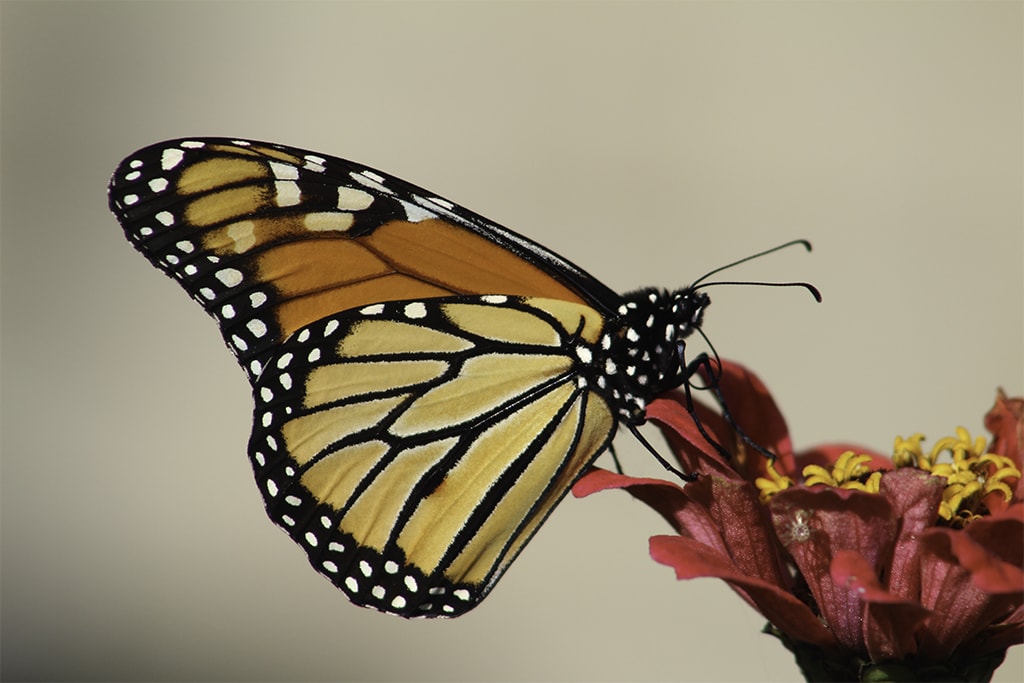
7. Post-Processing and Editing.
Unveiling the Beauty: Elevating Butterfly Images through Post-Processing Artistry.
The art of butterfly photography doesn’t conclude once you’ve captured the moment through your lens; instead, it extends into post-processing, where you fine-tune your images to evoke the essence of the delicate creatures you’ve captured. With the help of editing software, you can heighten the visual allure of your photographs, weaving an intricate tapestry that celebrates the natural elegance of these winged wonders.
A Painter’s Palette of Digital Tools.
Post-processing is akin to the work of an artist in a studio, where the canvas is your photograph and the palette consists of editing tools. This digital alchemy allows you to refine the exposure, contrast, sharpness, and color balance, sculpting your image into a masterpiece that resonates with the emotions you experienced in the presence of the butterfly.
Begin with the basics: adjust the exposure to ensure the butterfly is illuminated correctly without losing the intricate details. Experiment with contrast to create a visual impact emphasizing patterns and textures. Play with sharpness to bring forth the delicate scales and veins integral to their beauty.
The Fine Balance of Enhancement.
In the process of post-processing, it’s essential to embrace a delicate balance. The goal isn’t to manipulate the image beyond recognition but to enhance the inherent beauty that your camera captured. Think of your role as that of a curator in a gallery, preserving the authenticity of the subject while accentuating its allure.
As you manipulate the tools at your disposal, exercise restraint. Resist the temptation to push contrast to extremes or saturate colors to the point of artificiality. Instead, let the natural grace of the butterfly guide your decisions, allowing the image to unfold with a sense of authenticity.
Honoring the Essence of the Butterfly.
A profound respect for the subject lies at the heart of the post-processing journey. Each adjustment and tweak should honor the delicate creature you’ve captured, highlighting its intricate details and ephemeral charm. The butterfly isn’t just a subject; it’s a muse that has allowed you to glimpse its world, and it’s your responsibility to convey that experience with integrity.
Think of post-processing as a way to enhance the storytelling capacity of your image. Your photograph is a window into the enchanting world of butterflies – a world where colors are vibrant, patterns are intricate, and elegance is paramount. Through the gentle touch of post-processing, you refine this window, allowing viewers to peer deeper into the soul of your subject.
A Symphony of Craftsmanship.
In the journey of butterfly photography, post-processing is the symphony’s crescendo – a culmination of craftsmanship that elevates your work from mere photographs to visual narratives. With each adjustment, you draw closer to revealing the ineffable beauty that captivated your heart and lens.
Remember, you’re not just processing an image but crafting an experience. Through your artistry, you allow others to share in the wonder of those fleeting moments you spent among the delicate flutter of wings, and you invite them to see the world through the lens of your admiration and awe.

8. Respect and Conservation.
Guardians of Beauty: Ethical Butterfly Photography and Conservation
Embarking on the journey of butterfly photography is a privilege that connects you with the delicate and captivating world of these winged wonders. Yet, as you immerse yourself in this enchanting pursuit, it’s paramount to remember that your presence in their realm carries a responsibility to uphold ethical practices that respect not just the subjects of your lens but the fragile ecosystems they inhabit.
Respecting Sacred Spaces
As you step into the realm of butterflies, you are a guest in their sanctuary – a realm of delicate ecosystems that exist in delicate balance. The habitats that nurture these creatures are sanctuaries of life, nurturing not just butterflies but an intricate web of interconnected species. Treat these spaces with reverence, treading lightly to minimize your impact.
Avoid disturbing their natural habitats. Resist the urge to trample through delicate meadows or step off marked paths in pursuit of the perfect shot. Every footfall has consequences, and by adhering to designated paths, you contribute to preserving these havens of biodiversity.
Guardians, Not Manipulators
In pursuing a photograph, it’s easy to forget that you’re capturing living beings – creatures that belong to a complex web of life. Never resort to manipulation or harm for the sake of a shot. Avoid handling butterflies excessively or attempting to force them into unnatural poses. These are delicate beings, and your role is that of a guardian, not a manipulator.
Do not disrupt their behaviors or habitats to capture an image. The charm of butterfly photography lies in capturing their natural beauty in their natural surroundings. Wait patiently for opportunities, respecting their rhythms and behaviors and allowing them to grace your lens on their own terms.
Leaving No Trace
The essence of ethical photography lies in leaving no trace of your presence. As you venture into butterfly habitats, practice the Leave No Trace principles. Carry out whatever you carry in, disposing of waste responsibly. Be mindful of any potential impact your presence might have on the environment, and make a conscious effort to minimize it.
When composing your shots, consider your surroundings. Position yourself and your equipment to minimize disturbance to the flora and fauna around you. The goal is to capture the butterfly’s beauty while ensuring its habitat remains undisturbed.
Champions of Conservation
As a participant in butterfly photography, you have the unique opportunity to become a champion of conservation. Use your passion and images to raise awareness about preserving these delicate creatures and their habitats. Support local conservation efforts, whether through donations, volunteering, or participating in educational initiatives.
By contributing to the conservation of butterfly populations, you help ensure that future generations can revel in the same beauty that has captivated your heart. Your images become more than photographs; they become catalysts for change, sparking a love for these creatures and inspiring action to protect them.
A Journey of Stewardship
Butterfly photography is a journey of stewardship that transcends aesthetics and delves into the heart of our responsibility to the natural world. As you wield your camera, remember that you’re not just capturing images; you’re becoming a guardian of beauty, an advocate for the delicate creatures that dance on fragile wings, and a voice for the ecosystems that sustain them. Let your artistry be a beacon of respect, conservation, and wonder that illuminates the path toward a more harmonious coexistence with nature.
In conclusion, photographing butterflies is a rewarding journey that requires combining technical skills, observation, and an appreciation for nature’s wonders. By approaching these creatures with respect, patience, and a keen eye, you can capture breathtaking images that celebrate their ephemeral beauty and inspire others to marvel at the intricate world of butterflies.


Recent Posts
In shadows cast by love's deceitful guise,He wandered blind, his heart the captive prize.Through realms unknown, where truth remained concealed,He followed trails of falsehood, unrevealed. Blinded...
Prepare to be amazed as the MCAS Cherry Point Air Show returns on May 11-12. This annual event, hosted by the Marine Corps Air Station (MCAS) Cherry Point in North Carolina, promises a weekend of...